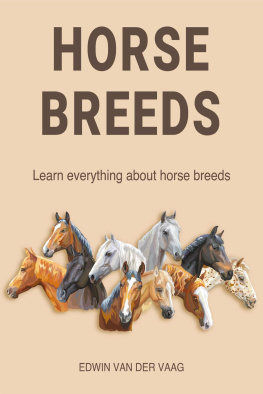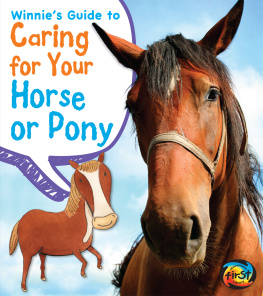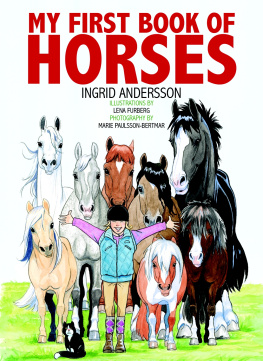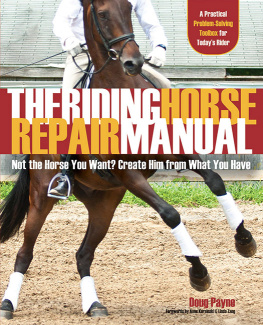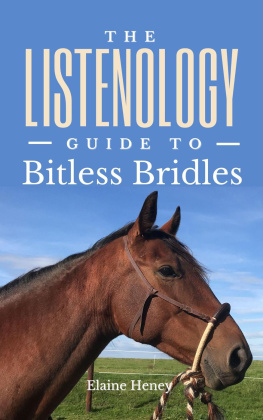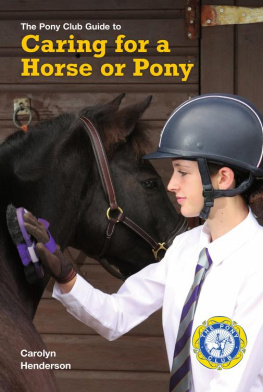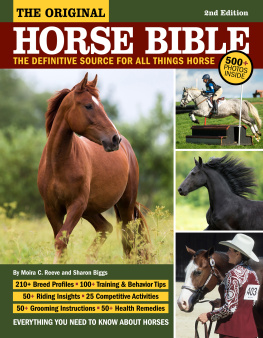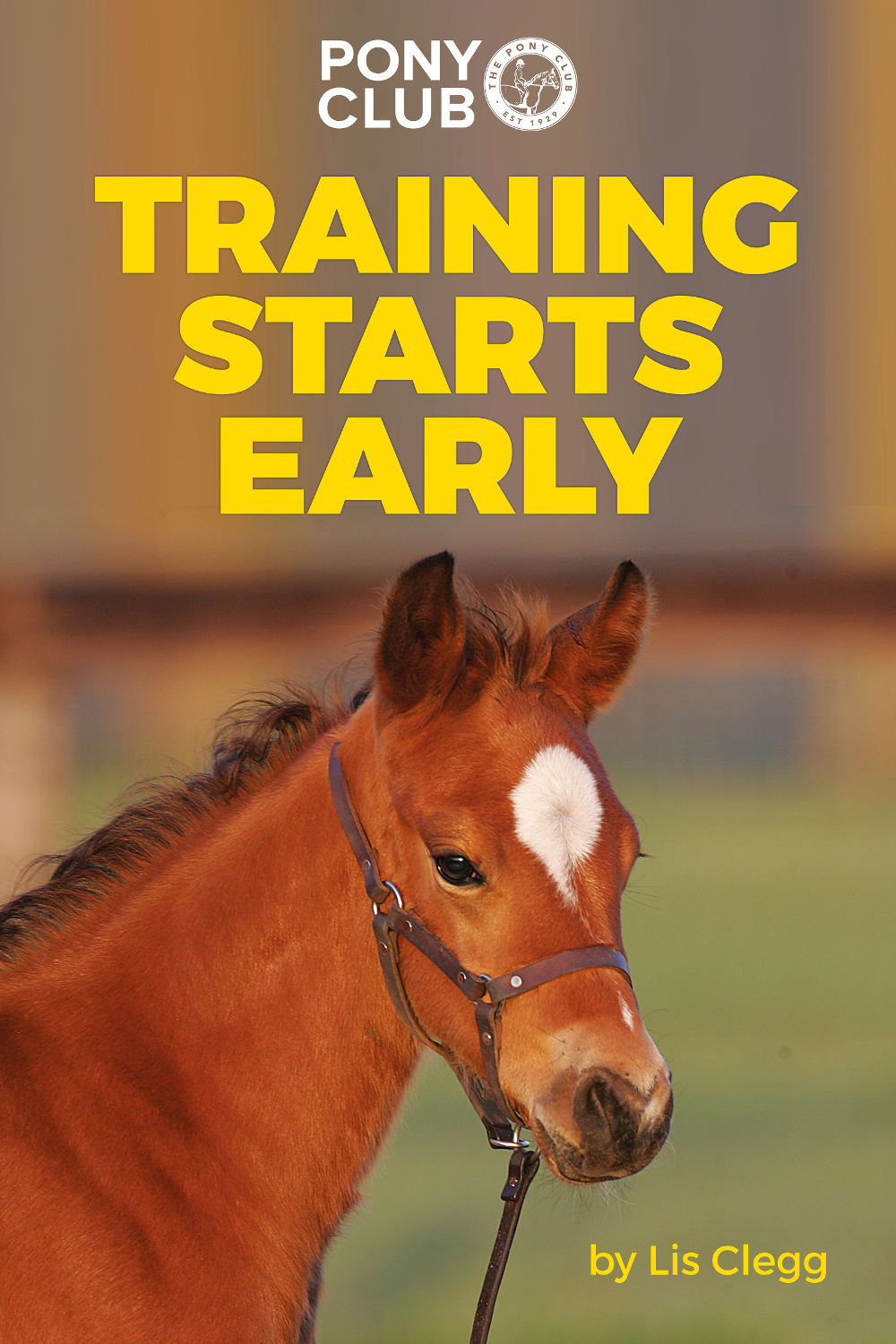
Starting a horse is a long-term investment that takes patience and commitment. It's also fun and rewarding and you really do get out what you put in. Working with a horse from his earliest days means you can establish your methods, in other words the way you communicate, from the start; you also have time to get to know each other and develop a bond.
Discipline, kindness, firmness and routine are very important: you need to educate the horse in a way he understands and make allowances for his lack of experience and physical ability while he's growing and learning.
Finding the right horse at this early stage is partly down to intuition, because you can't predict exactly how big he'll grow, you can't ride him, and a young horse may well look gangly and awkward. You can, however, look at character, attitude, conformation, movement, type and, if you know it, his breeding. The right temperament is vital, as is the best build for the job that will be expected of him.
Horses generally are not fully mature until around age seven or eight, sometimes even later; the speed at which they develop physically and mentally also influences when to back them and how fast to progress their work. Most are ready to back at about three-and-a-half years old but some benefit from waiting a little longer while others may be strong enough to start earlier before they get too full of themselves. Some learn faster than others, some are quite straightforward and take in their lessons easily while others may not, so be prepared to adapt your basic plan as you go.
For the purposes of this book we look at each stage of training from the foal onwards, but it can all be adapted to suit your situation. If you're taking on a youngster that someone else has started, find out what's been doneor, just as crucially, not done. You may need to take the horse back a stage in order to gain confidence together while he becomes accustomed to his new home, especially if he's recently backed. However, you also need to keep his education moving forward in a positive way so that work and discipline become both a habit and something the horse enjoys.
Take time to consider your training methods and their impact on the horse's body and mind; and while it may be helpful to have goals, you have to let the horse's needs dictate the pace.

Some horses learn faster than others, but they all respond to kindness, patience and routine.
Starting a horse requires a high level of horsemanship, tact and confidence, because everything you do will be reflected in the rest of his life. If you haven't started a horse before but you have a good level of horsemanship and horse sense, you can do it, but you'll need help. If you're used to made horses your youngster will be quite an eye-opener: unbalanced, sharper, less predictable and more easily confused. Be guided by an experienced trainer from the outset, as they can start you off then give you lessons to work on and an objective eye to check how the horse is getting on. The ability to assess your horse's progress and know when to introduce new elements of his training comes with practice.
Always have a helper with you when you work a young horse, or at least someone within earshot who can keep an eye on you. For both day-to-day and expert help, choose people you trust and can work with calmly and confidently so that you function as a team. The atmosphere you create will always transmit to the horse.
Facilities are important toowherever you handle or work the horse must be safe for both of you. The use of an arena is a great help as it gives you a level, enclosed space to work in, and floodlights will be useful if you're fitting in your horse with other commitments. If you don't have access to one on the spot it's worth finding out whether you can hire one locally.
However, the most important thing is somewhere safe to work in, with good footing and as level as possible, so a field is fine; try to vary the patch you use, though, as the ground is likely to become poached. A corner with solid fencing is ideal to start with as the fences will make the horse feel more secure, but don't worry: teaching him to be confident and focus in a field will have benefits later on. Do not use temporary fencing such as electric to section it off as a flighty youngster could become tangled in it.
Early in your horse's training, when he may be unpredictable or easily alarmed, try to arrange sole use of a working area for the safety of everyone concerned. As he progresses you can get him used to sharing a space, but do be sensible about itwork with just one other, quiet horse to begin with and don't ride a youngster when another horse is being lunged. Once the youngster is backed and being ridden away, some trainers like to focus on hacking out for a while so that the horse learns to think forward and balance on different ground while adjusting to the rider's weight and growing into his own body. So if you don't have constant access to an arena there is plenty you can do without one.
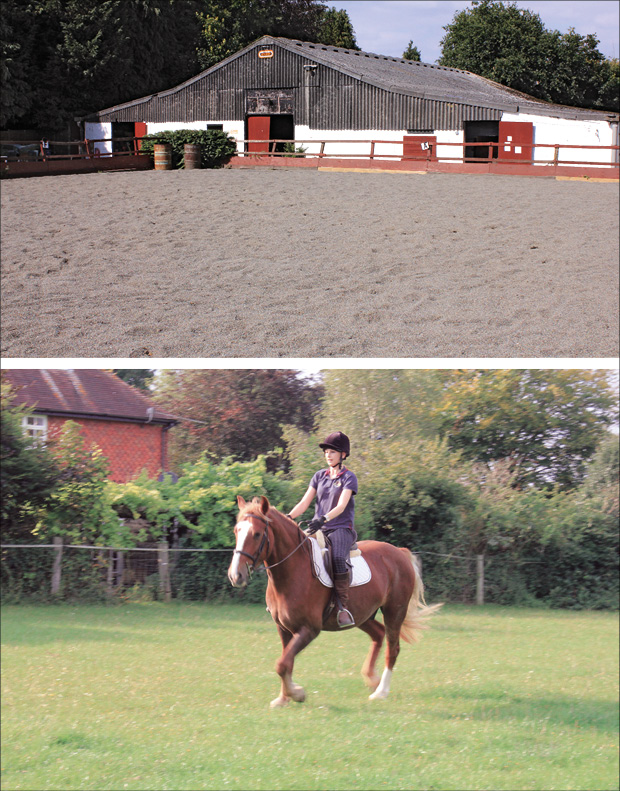
A sandschool is ideal to work in, but the corner of a level, well-fenced field is just as good.
Horses should be handled consistently from the youngest possible age, but don't confuse this with over-handling, which can sour them. Until they are ready to back, the important thing is to introduce them to as much as possible from the ground, but do it in small doses. A regular routine of catching up, patting on both sides and, provided the youngster has been taught it earlier, picking out feet, is good, but don't spend too long over it and do allow him plenty of time in the field with other horses so that he learns, above all, to be a horse. Over-handled youngsters can be difficult to deal with later in life as they lack respect for humans.
Once you begin to introduce work, whether it's leading about or, when the horse is developed enough, lungeing, this should be done regularly but not necessarily every dayyou don't want him to get bored of it and in fact it's better not to overdo the lungeing as it can put strain on the horse's body.
Always try to be flexible with your time in case the lesson does not go to plan. It's not advisable to try to work youngsters in a high wind or other distracting weather conditions.
When you begin the build-up to backing you'll need to work the horse daily. Allow about three weeks for preparation on the lunge and long reins, then another four weeks for backing and the first stages of riding away. After this, if the horse is three years old it's usually recommended to turn him away for a few weeks. If the horse has been backed at four years old or is particularly strong or wilful, you should continue regular work even if it's not done every day. Do remember that whatever his build he is not fully grown yet, so he'll appreciate a lightweight rider.
When handling horses you should always wear a riding hat, gloves and boots with a firm upper and a rigid sole that give your feet some protection and stability. You might also choose to wear a body protector when handling and backing a youngster. Make sure that none of your clothing flaps about or rustles loudly. (The book, T he Pony Club Pocket Guide to Equestrian Dress , has more information about appropriate apparel.)


